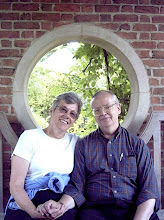Apparently human beings whose souls have answered to God’s call cannot just be “on earth”; they must have a “heavenly” counterpart. Hence certain lightnings and stars represent their celestial “dimension,” as it were. The author reads the lightnings and stars as cosmically projected symbols of the spiritual aspect of saints on earth. The imagery of spatial transcendence is transparently symbolic of inner spirituality as the presence of “heaven” within human personality.
Our second witness is Jewish merkabah (“throne-chariot”) mysticism, which flourished within Judaism as a significant but underground movement from some time after Ezekiel right down through medieval cabalism to modern Hasidism. The great historian of this phenomenon in Judaism G. G. Scholem comments almost offhandedly on a shift in the mystics’ perception of the nature of the spiritual quest, a shift that took place so inconspicuously that it can only be dated as happening somewhere around 500 c.e. It was the moment when the Jewish mystics no longer spoke of the mystical ascent through the seven heavens, and described it rather as a descent.41 This revolution in imagery (and nothing is more revolutionary than the transformation of the fundamental metaphors by which we apprehend the world) marked the perception that the mystic did not in fact journey into heaven but penetrated the soul’s own depth. This shift was the seed that would, after many centuries of drifting, darkness, nurture, and growth, come to full flower in an inheritor of that mystical tradition—Sigmund Freud. It is this shift that led finally to the psychological mind-set of modern times, stripped, however, of a sense of the divine reality within. It was that shift which enabled Jung, standing on Freud’s shoulders (or toes), to recover a sense of the numinous reality behind the myth and symbol and to redirect us back to these ancient treasuries of truth, with this difference: we can now withdraw the unconscious projections which “change the world into the replica of one’s unknown face,” and locate the cosmic aspect of myth within ourselves—and, I would wish to add, in the inwardness of the events of our time and the forces of nature and history and institutional structures that impinge on us. We are, in short, capable of a “second reading” of the ancient texts, a reading in which the myth is understood to speak symbolically of the real but invisible spiritual dimension of personal and corporate earthly existence.
Why not, then, simply discard the myth in favor of our demythologized interpretation? The more obvious and general answer is that we cannot dispense with the myth because it says more than we can tell. It is not only lucid but opaque. It participates not only in the light of consciousness and reason but also in the darkness of mystery. It treasures things that we have not yet learned to comprehend and preserves them for a generation that might. Through a set of powerfully evocative symbols acknowledged as meaningful by a people, it presents an incredibly condensed story that depicts, through the indirect language of narrative, the nature of ultimate reality, the way things got how they are, the path to salvation, and the final meanings of life. All our “explanations” of myths are dispensable and time-bound and will soon be forgotten, but the myth lives on, fed by its continual interplay with the very reality it “presents.”
41. G. G. Scholem, Major Trends in Jewish Mysticism (New York: Schocken Books, 1941, 1965), 46-47. Perhaps a similar phenomenon happened independently in gnosticism as well. Speaking of the same kind of mystical journey to heaven, the NHL Steles Seth says, “The way of ascent is the way of descent” (127: 21-22). This echoes an ancient saying of Heraclitus: “The way up and the way down are one and the same” (H. Diels, Die Fragments der Vorsokratiker (Berlin: Weidmannsche Buchhandlung, 1912), 1:89, frag. 60). Perhaps that ancient insight was only now being vindicated. See also NHL Zost. 82:23-24 and the Teach. Silv. 116:27-117.:5; and 117:6-9—“Open the door for yourself that you may know what is. Knock on yourself that the Word may open for you.” The Greater Hekhalot repeatedly refers to the “descent” into the Merkabah, as do the “Hekhalot Fragments” (cited by Ithamar Greunwald, Apocalyptic and Merkavah Mysticism [Leiden: E. J. Brill, 1980], p. 188). Another way of symbolizing the “descent” to God appears in Re’uyot Yehezkel, where Ezekiel is depicted as “standing on the River Chebar looking down at the water and the seven heavens were opened to him and he saw the Glory of the Holy One” (cited by Gruenwald, p. 135). The water serves as a mirror of the things in heaven. But that is tantamount to saying that the heavenly is revealed through the depths of the unconscious (“water”). See also T.B. Sanh. 91b—“So will the Holy One, blessed be He, bring the soul, [re]place it in the body, and judge them together, as it is written. He shall call to the heavens from above, and to the earth, that he may judge his people: He shall call to the heavens from above—this refers to the soul; and to the earth, that he may judge his people—to the body.” One could scarcely hope to find a more explicit equation of heaven with the “within” of a person.
— Walter Wink, Naming the Powers, pp. 141-143.
Subscribe to:
Post Comments (Atom)

No comments:
Post a Comment